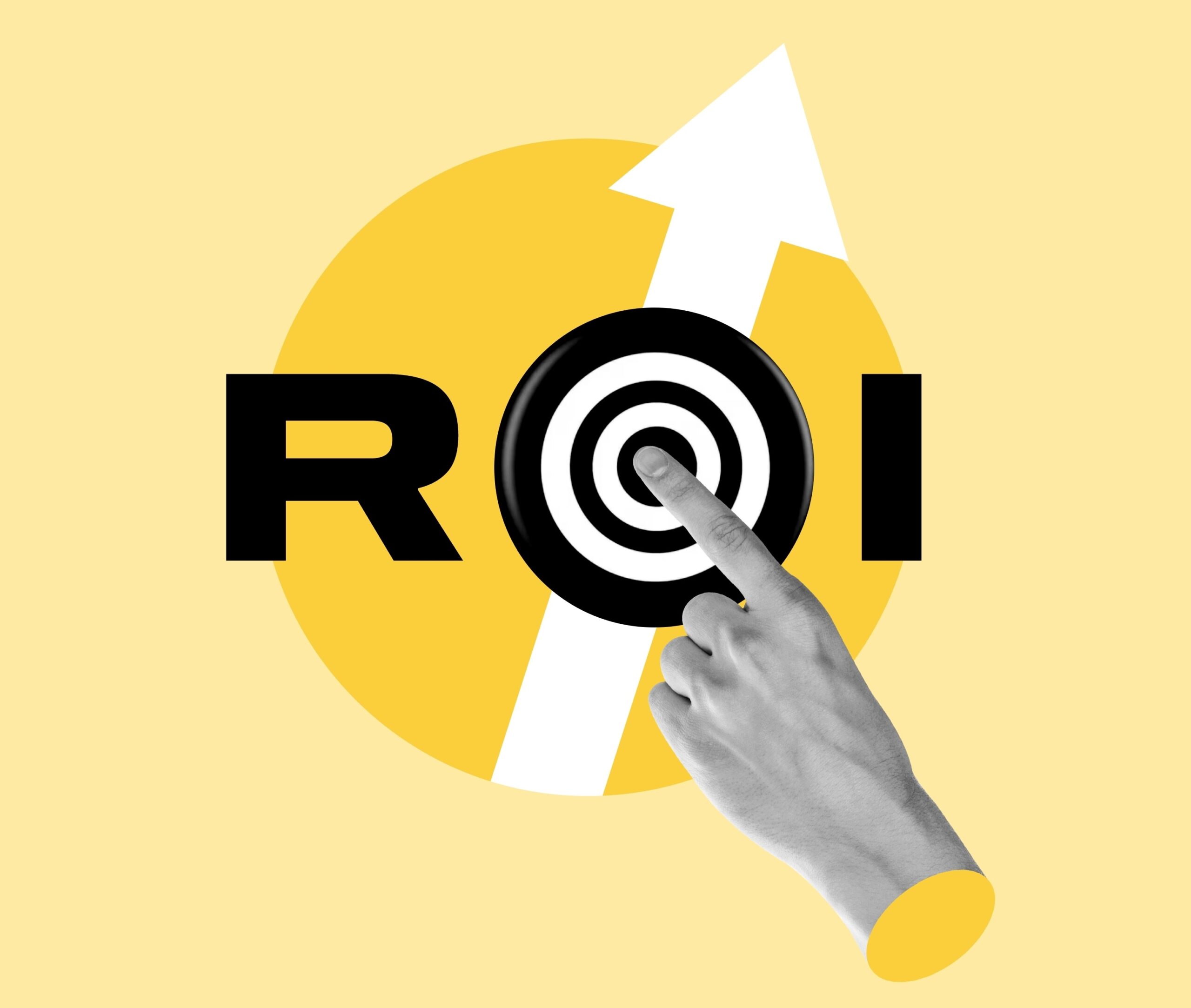Unlock the full potential of your ERP system. Discover actionable tips and strategies to maximize your ERP ROI, streamline operations, and boost profitability.
Imagine you’re managing operations at a bustling distribution center. Your day is filled with overseeing inventory, ensuring timely order fulfillment, and constantly seeking ways to streamline processes. You know that an optimized ERP system could be the key to overcoming these challenges and boosting your bottom line. But how do you ensure that your investment in an ERP system truly pays off? This post aims to provide you with practical tips and strategies to maximize your ERP investment and achieve a higher ERP ROI, especially for those in the distribution industry.
Understanding ERP ROI
ERP ROI, or Return on Investment, is a critical measure of the value your Enterprise Resource Planning (ERP) system brings to your business. For professionals in distribution, this means evaluating how well your ERP system helps you manage inventory, reduce errors, streamline order processing, and ultimately improve customer satisfaction.
Cost Savings: Implementing an ERP system can lead to significant cost savings by automating routine tasks, reducing manual errors, and streamlining processes. These savings can be direct, such as reduced labor costs due to automation of repetitive tasks, or indirect, like minimizing costly errors that disrupt operations and delay shipments.
Efficiency Gains: As a manager or someone in leadership, you understand the importance of efficiency. ERP systems provide real-time data and insights, enabling better decision-making. This translates to faster order processing, optimized inventory levels, and reduced downtime, allowing your team to focus on more strategic activities rather than getting bogged down by manual tasks.
Improved Decision-Making: With an ERP system, you have access to comprehensive data and analytics. This information helps you make informed decisions that drive business growth. For example, having visibility into sales trends can help you forecast demand more accurately, reducing excess inventory and ensuring that popular products are always in stock.
Components of ERP ROI:
- Initial Costs: The upfront investment required to purchase and implement the ERP system, including software, hardware, and training.
- Ongoing Costs: Maintenance, support, and any additional costs associated with the ERP system. Consider these as necessary investments to keep your system running smoothly and efficiently.
- Time Savings: Reduction in time spent on manual processes and administrative tasks. Think about the hours saved each week by automating tasks like inventory tracking and order processing.
- Efficiency Gains: Improvements in process efficiency, leading to cost savings and productivity gains. Faster processing times, fewer errors, and better resource allocation are just a few examples.
- Improved Accuracy: Reduced errors in data entry, inventory management, and other operations. Accurate data ensures that you can make the right decisions quickly and confidently, enhancing overall operational performance.
Understanding these components is essential for measuring the success of your ERP system and identifying areas for further optimization. As a professional in the convenience distribution industry, you need to focus on how these factors directly impact your daily operations and long-term business goals.

Strategies for Maximizing ERP ROI
To truly maximize the ROI of your ERP system, it’s important to implement strategies that leverage the full potential of the system. Here are some key strategies to consider:
Optimize Processes:
- Identify and Eliminate Inefficiencies: Conduct a thorough analysis of your current operations to identify bottlenecks and areas of waste. Use your ERP system to automate and streamline these processes, which can significantly reduce operational costs and increase efficiency.
- Standardize Procedures and Workflows: Create standardized procedures and workflows within your ERP system to ensure consistency and accuracy across your operations. This helps in reducing errors and improves overall process efficiency.
- Use Data Analytics to Make Informed Decisions: Leverage the data analytics capabilities of your ERP system to gain insights into your operations. Use this data to make informed decisions that can drive business growth and improve operational performance.
Leverage Advanced Features:
- Utilize Automation for Routine Tasks: Automate routine tasks such as order processing, inventory management, and reporting. Automation reduces the time and effort required to complete these tasks, allowing your team to focus on more strategic activities.
- Implement Advanced Reporting and Analytics Tools: Use advanced reporting and analytics tools to gain deeper insights into your operations. These tools can help you identify trends, forecast demand, and make data-driven decisions that improve efficiency and profitability.
- Integrate with Other Systems: Integrate your ERP system with other business systems such as CRM, SCM, and e-commerce platforms. Integration ensures seamless data flow between systems, reducing manual data entry and improving overall operational efficiency.
Training and Support:
- Invest in Comprehensive Training Programs: Ensure that your staff is well-trained on how to use the ERP system effectively. Comprehensive training programs can help your team understand the full capabilities of the system and how to leverage them for maximum benefit.
- Provide Ongoing Support and Resources: Provide ongoing support and resources to help your team address any issues or challenges they may encounter. This ensures that your staff can use the system effectively and efficiently.
- Encourage a Culture of Continuous Improvement: Foster a culture of continuous improvement within your organization. Encourage your team to regularly review and optimize their use of the ERP system to ensure they are leveraging its full potential.
Regular Review and Adjustment:
- Continuously Monitor Performance Metrics: Regularly monitor key performance metrics to track the effectiveness of your ERP system. Use these metrics to identify areas for improvement and make necessary adjustments.
- Regularly Review and Adjust Processes and System Configurations: Regularly review your processes and system configurations to ensure they are optimized for maximum efficiency. Make necessary adjustments to improve performance and achieve better results.
- Stay Updated with New ERP Features and Updates: Stay updated with the latest ERP features and updates. Implementing new features and updates can help you leverage the latest advancements and improve the overall performance of your ERP system.
Related: How to Choose the Right ERP Vendor for Your Distribution Business

Creating an ERP ROI Calculator
Understanding how to calculate the ROI of your ERP system is crucial for making informed investment decisions. Here’s a step-by-step guide to creating a simple ERP ROI calculator using a spreadsheet or manual calculations:
1. Identify Relevant Data Inputs:
- Initial Costs: Include all upfront costs such as software purchase, hardware, implementation, and training expenses.
- Ongoing Costs: Include maintenance, support, and any recurring fees associated with the ERP system.
- Time Savings: Estimate the time saved by automating manual processes. This can be calculated by multiplying the hours saved per week by the average hourly wage of the employees involved.
- Efficiency Gains: Estimate the improvements in process efficiency, such as faster order processing times or reduced error rates. These gains can be converted into monetary value based on their impact on operational costs.
- Revenue Increases: Include any projected revenue increases due to improved customer satisfaction, faster order fulfillment, or better inventory management.
2. Calculate the ROI:
- Use the following formula to calculate the ROI:

- Total Gains: Sum of time savings, efficiency gains, and revenue increases.
- Total Costs: Sum of initial and ongoing costs.
3. Example Calculation:
First Year:
- Initial Costs: $50,000
- Ongoing Costs: $10,000
- Time Savings: 10 hours per week at $25 per hour = $13,000 per year
- Efficiency Gains: $15,000 per year
- Revenue Increases: $20,000 per year
- Total Gains: $13,000 + $15,000 + $20,000 = $48,000
- Total Costs: $50,000 (initial) + $10,000 (ongoing) = $60,000
- ROI Calculation for First Year:

Second Year Onward:
- Ongoing Costs: $10,000 per year
- Time Savings: 10 hours per week at $25 per hour = $13,000 per year
- Efficiency Gains: $15,000 per year
- Revenue Increases: $20,000 per year
- Total Gains: $13,000 + $15,000 + $20,000 = $48,000
- Total Costs: $10,000
- ROI Calculation for Subsequent Years:

In the first year, the ROI is -20% due to the initial implementation costs. However, from the second year onward, the ROI significantly improves to 380%, reflecting the ongoing benefits and reduced costs. This process helps you understand the financial impact of your ERP system and identify areas for improvement.
CDR Software’s DAC ERP: Your Solution for Maximizing ERP ROI
If you’re a professional at a thriving convenience distribution center, you face daily challenges of overseeing inventory, ensuring timely order fulfillment, and continually seeking ways to streamline processes. Implementing an optimized ERP system can be the key to overcoming these hurdles and enhancing your bottom line. CDR Software’s DAC ERP solution is designed to help you maximize your ERP return on investment (ROI) by addressing these specific needs and offering robust tools to improve efficiency and decision-making.
Why Choose CDR Software’s DAC ERP?
Tailored for Convenience Distribution: Our ERP solution is specifically designed for the convenience distribution industry, ensuring that the unique challenges and needs of your business are met with precision.
Advanced Features for Enhanced Efficiency:
- Automation of Routine Tasks: DAC ERP automates repetitive tasks such as inventory management, order processing, and reporting, significantly reducing manual effort and human error.
- Real-Time Data and Analytics: Gain comprehensive insights into your operations with real-time data, enabling you to make informed decisions quickly and accurately.
- Integration Capabilities: Seamlessly integrate DAC ERP with other business systems to ensure smooth data flow and improved operational efficiency.
- Comprehensive Training and Support: We provide extensive training programs to ensure your team can leverage the full capabilities of the ERP system. Our ongoing support ensures that any issues or challenges are promptly addressed, keeping your system running smoothly and efficiently.
How DAC ERP Maximizes Your ROI
Cost Savings: By automating tasks and reducing manual errors, DAC ERP helps you achieve significant cost savings. This includes direct savings from reduced labor costs and indirect savings from minimizing costly operational disruptions.
Efficiency Gains: With DAC ERP, you can streamline your processes, reduce downtime, and optimize inventory levels. This leads to faster order processing and allows your team to focus on strategic activities that drive growth.
Improved Decision-Making: Our ERP system provides you with comprehensive data and analytics, empowering you to make better decisions. For example, visibility into sales trends enables more accurate demand forecasting, reducing excess inventory and ensuring that popular products are always in stock.
Related: The Power of Partnership: CDR’s Approach to Convenience Distribution
Conclusion: Achieve Higher ERP ROI with DAC ERP
Maximizing your ERP ROI requires a strategic approach. By implementing CDR Software’s DAC ERP, you can optimize processes, leverage advanced features, provide adequate training, and regularly review performance. These strategies will help you achieve substantial returns on your ERP investment.
By focusing on cost savings, efficiency gains, and improved decision-making, DAC ERP can transform your operations. The automation of routine tasks and the integration of advanced analytics tools ensure that your business runs smoothly and profitably. Comprehensive training and ongoing support further enhance the system’s effectiveness, allowing your team to fully leverage its capabilities.
Take action today and start implementing these strategies to boost your ERP ROI. Contact CDR Software to learn more or schedule a demo of our DAC ERP solution. Together, we can ensure you have an ERP system that delivers maximum value to your business.
FAQ’s
What is ERP ROI and why is it important?
ERP ROI, or Return on Investment, measures the value your ERP system brings to your business compared to its cost. It’s important because it helps you determine the financial benefits of your ERP investment and identify areas for improvement to maximize efficiency and profitability.
How can ERP systems lead to cost savings in convenience distribution?
ERP systems can lead to cost savings by automating routine tasks, reducing manual errors, streamlining processes, and improving inventory management. This reduces labor costs, minimizes costly errors, and ensures efficient resource allocation.
What are some common challenges in implementing an ERP system?
Common challenges include high upfront costs, resistance to change from staff, integrating the ERP system with existing technologies, and providing adequate training and support for employees.
How can I calculate the ROI of my ERP system?
To calculate ERP ROI, identify relevant data inputs such as initial and ongoing costs, time savings, efficiency gains, and revenue increases. Use the formula:

This helps you quantify the financial benefits of your ERP system.
What strategies can help maximize ERP ROI?
Strategies include optimizing processes, leveraging advanced features, investing in comprehensive training programs, providing ongoing support, and regularly reviewing and adjusting processes and system configurations.
How often should I review the performance of my ERP system?
Regularly monitor key performance metrics and review your ERP system’s performance at least quarterly. This helps you identify areas for improvement and ensure the system remains aligned with your business goals.
Can ERP systems improve decision-making?
Yes, ERP systems provide comprehensive data and analytics that enable informed decision-making. This helps you forecast demand, manage inventory more effectively, and respond quickly to market changes.
What are the benefits of integrating ERP with other business systems?
Integrating ERP with systems like CRM, SCM, and e-commerce platforms ensures seamless data flow, reduces manual data entry, improves operational efficiency, and provides a holistic view of your business operations.

